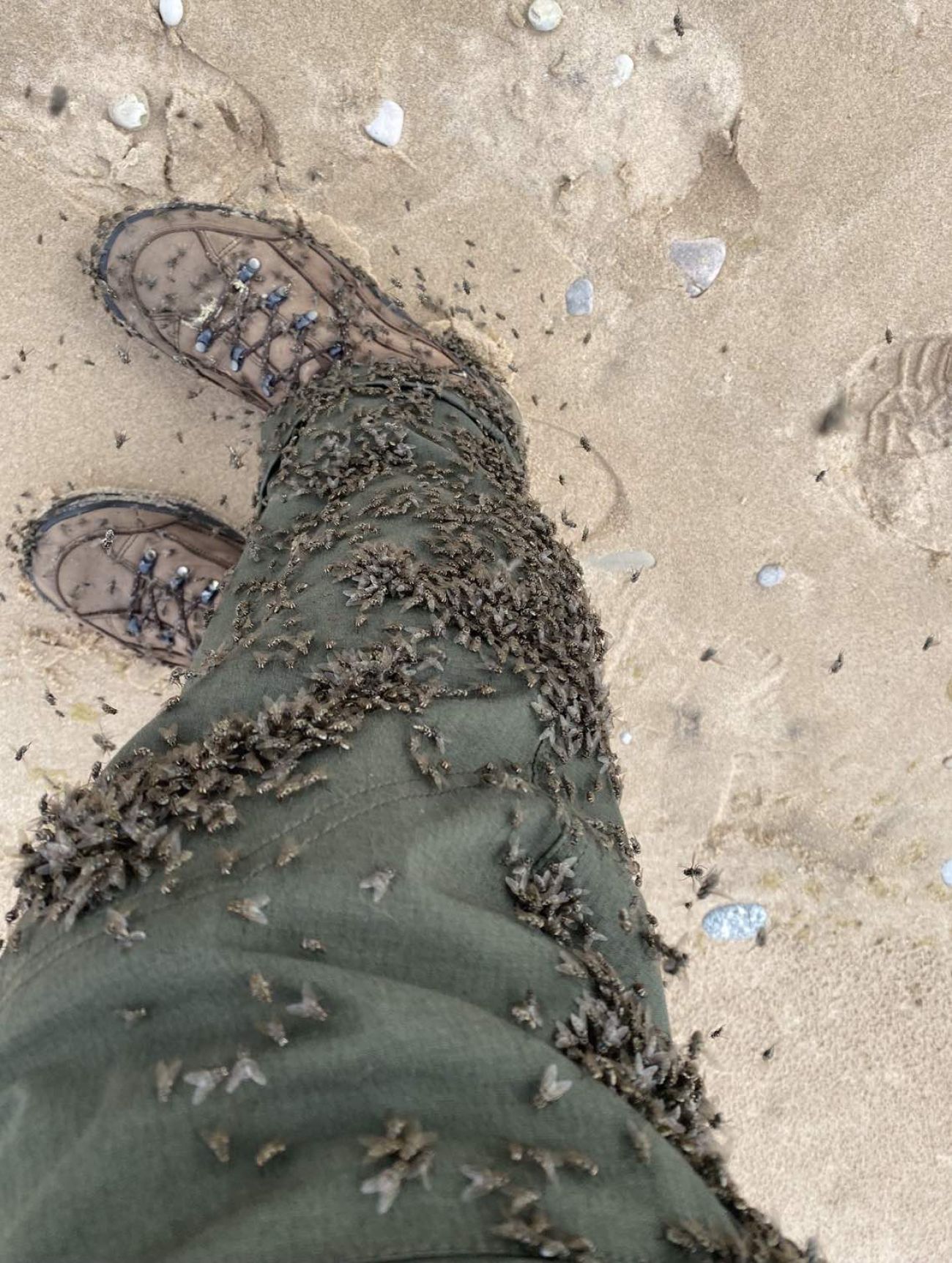Black flies are swarming in northern Michigan and the U.P.

- Black flies are making an appearance just as vacation season gets underway
- The small gnat-like insects swarm around clean bodies of water and hit peak activity during mid-June
- Female black flies’ bites can cause painful itching and swelling
With warm weather comes various insects, some of which can be a nuisance to humans. Among the latest to appear — just in time for summer vacations — are black flies, commonly found in the northern part of the state, near bodies of water.
If you don’t take the proper precautions, you could end up with a few black fly bites.
What are black flies?
Black flies are small gnat-sized insects that typically appear in large swarms in wetlands, along the edges of water.
The small insect is prominent near bodies of water in northern Michigan and the Upper Peninsula between mid-May through the end of June but they can be spotted during the fall as well, according to the National Park Service.
Related:
- Fireflies resurge in Michigan. This year's show is ‘best it’s going to be’
- Get ready for amorous mayflies, Michigan, and the smelly crunch of love
- The Great Lakes are warming ahead of the start of summer
There are more than 65 species of black flies in Michigan and they all range in size, according to David Lowenstein, a Michigan State University horticulture expert.
“The best way to identify them is once you've gotten bitten by the fly,” Lowenstein said. “A lot of flies look really similar to each other, and it's just unfortunately not easy to identify different kinds of flies until it's too late.”
Most species of black flies are small and stout with a humpback.
How to identify them
The most distinctive feature of a black fly is its bite, which can cause painful itching and swelling. One bite may not be painful but because black flies swarm in large numbers; it's likely that someone can get bitten by multiple black flies at once, which can be very painful, Lowenstein said.
“It's the abundance that leads to problems rather than just a single fly or two biting someone,” he said.
Only female black flies bite. Male black flies’ mouthparts are not capable of biting humans, according to the National Park Service.
North American black flies, which can be found in Michigan and across the northern U.S. and parts of Canada don’t transmit diseases, and are most active during the day, unlike mosquitoes.
How to protect yourselves against black flies
The best way to protect yourself from the tiny insect is to stay indoors since they stay outside. If you live in an area where there is a large black fly population or visit a park in northern Michigan or the Upper Peninsula, Lowenstein recommends researching the area you’re visiting to get a sense of how aggressive the black fly population is.
“Some parts of the state are more prone to biting flies compared to others. So as nice as the scenery might look, check out the location online first,” he said.
He also recommends using the same insect repellent you would to fight off mosquitoes, which will provide some protection. Wearing long sleeves and pants will also help keep black flies away because they can’t bite through clothing.
“Limiting exposed skin on your arms, on your legs will mean less places that you can get bit,” he said. “In areas where it's an extreme problem, you’ll sometimes see people wearing hats with a little bit of netting over it.”

Don’t forget about stable flies
There's another summer pest in parts of the state which some people may find more difficult to protect themselves against.
The main insect biting people at Pictured Rocks National Lakeshore isn’t the black fly but the stable fly, which looks like a small housefly and causes a painful bite, according to the National Park Service. And repellents don’t work against them, the park service says.
“Since they target legs and ankles, loose-fitting long pants and thick socks are recommended when stable flies are active,” NPS says on its website.
Pictured Rocks posted a photo on Facebook last week of a ranger with his pants leg covered in flies. Not to be outdone, Sleeping Bear Dunes National Lakeshore responded with an even creepier closeup shot, quipping: “Our fly-covered park ranger pants are way more stylish than yours!”
Michigan Environment Watch
Michigan Environment Watch examines how public policy, industry, and other factors interact with the state’s trove of natural resources.
- See full coverage
- Subscribe
- Share tips and questions with Bridge environment reporter Kelly House
Michigan Environment Watch is made possible by generous financial support from:
Our generous Environment Watch underwriters encourage Bridge Michigan readers to also support civic journalism by becoming Bridge members. Please consider joining today.
See what new members are saying about why they donated to Bridge Michigan:
- “In order for this information to be accurate and unbiased it must be underwritten by its readers, not by special interests.” - Larry S.
- “Not many other media sources report on the topics Bridge does.” - Susan B.
- “Your journalism is outstanding and rare these days.” - Mark S.
If you want to ensure the future of nonpartisan, nonprofit Michigan journalism, please become a member today. You, too, will be asked why you donated and maybe we'll feature your quote next time!






